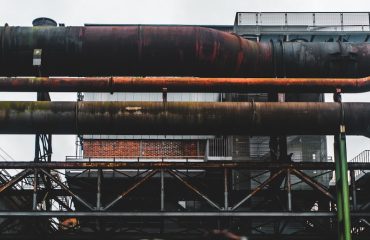“`html
Choosing the right material for a construction project is crucial. Two titans dominate the structural engineering world: steel and reinforced concrete. Both offer unique properties, advantages, and disadvantages. This in-depth comparison will help you understand the nuances of each material, enabling you to make informed decisions for your next project.
Strength and Load-Bearing Capacity: A Tale of Two Titans
Steel boasts exceptional tensile strength, meaning it can withstand significant pulling forces. This makes it ideal for structures requiring high flexibility and resistance to dynamic loads, such as bridges and skyscrapers. Reinforced concrete, on the other hand, excels in compressive strength, resisting crushing forces effectively. The addition of steel reinforcement bars (rebar) significantly improves its tensile strength, making it suitable for a wide range of applications, including buildings, dams, and retaining walls. While steel might have a higher yield strength, concrete’s mass provides inherent stability, especially against lateral forces.
The choice between steel and concrete often depends on the specific load requirements. For structures subjected to predominantly tensile forces, steel is generally preferred. For structures primarily experiencing compressive loads, reinforced concrete is a strong contender. In many instances, a hybrid approach, combining both materials, offers the best of both worlds, resulting in a structure that is both strong and cost-effective.
Durability and Longevity: Weathering the Storm
Steel’s durability is heavily influenced by its susceptibility to corrosion. While advancements in protective coatings and galvanization have significantly improved its lifespan, regular maintenance is crucial to prevent rust and degradation. Exposure to harsh weather conditions, especially in coastal areas, can accelerate corrosion. Reinforced concrete, while more resistant to corrosion, is vulnerable to alkali-aggregate reaction and chloride attack, particularly in environments with high humidity and salt content. Proper concrete mix design and the use of corrosion inhibitors can mitigate these issues.
In terms of longevity, both materials can last for decades, even centuries, with proper maintenance and design considerations. However, the lifespan of each material can vary significantly depending on environmental factors, construction quality, and the level of maintenance provided.
Cost-Effectiveness: Balancing Budget and Performance
The cost of steel and concrete structures can vary greatly depending on several factors, including material prices, labor costs, and design complexity. Generally, the initial cost of steel construction can be higher than that of reinforced concrete, particularly for smaller projects. However, the lighter weight of steel often leads to lower foundation costs, potentially offsetting the higher material cost. Concrete’s cost advantage can be significant in regions with readily available aggregates and lower labor costs. Transportation costs also play a significant role, as the transportation of steel can be more expensive than that of concrete components.
Ultimately, a comprehensive cost analysis, considering both initial and lifecycle costs, is essential to determine the most cost-effective solution for a specific project.
Construction Time and Efficiency: Speed vs. Precision
Steel structures often boast faster construction times compared to reinforced concrete structures. Pre-fabricated steel components can be assembled quickly on-site, reducing overall construction time. This speed is particularly advantageous for projects with tight deadlines. Reinforced concrete construction, while potentially slower, often allows for greater flexibility in design and on-site adjustments. The curing time of concrete is a significant factor impacting overall project duration.
The choice between steel and concrete regarding construction time will depend on project specifics, including site conditions, design complexity, and available resources.
Applications and Suitability: Finding the Right Fit
Steel’s high tensile strength and flexibility make it ideal for high-rise buildings, long-span bridges, and industrial structures requiring large open spaces. Its lightweight nature also simplifies transportation and erection. Reinforced concrete is commonly used in buildings of varying heights, dams, retaining walls, and tunnels. Its ability to withstand compressive forces and its inherent fire resistance make it suitable for structures requiring high durability and safety.
The optimal material choice will depend on the specific requirements of the project, including structural loads, environmental conditions, budget constraints, and construction timeline.
In conclusion, both steel and reinforced concrete are powerful structural materials, each with its own strengths and weaknesses. The best choice depends on a careful evaluation of the project’s specific demands, considering factors like strength, durability, cost, construction time, and aesthetic considerations. Often, a hybrid approach leveraging the benefits of both materials offers the most optimal solution.
SEO Tags:
- Steel Structures
- Reinforced Concrete
- Structural Engineering
- Construction Materials
- Steel vs Concrete
“`




